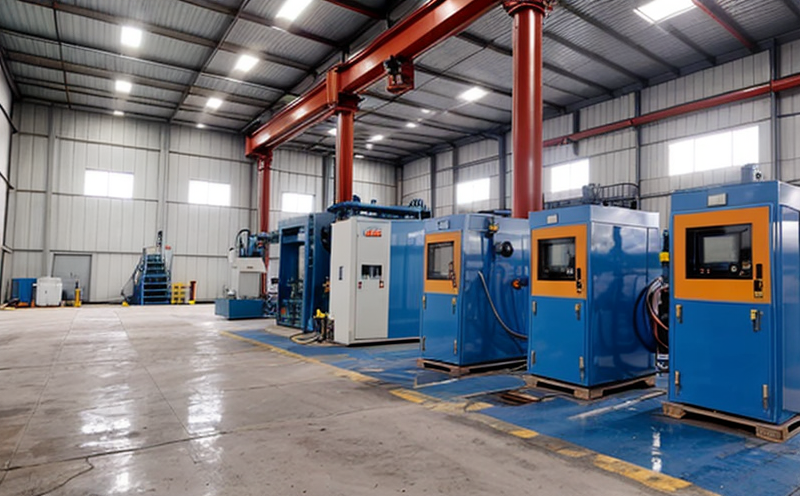DIN 51730 Ignition Loss in Mineral Samples Testing
The DIN 51730 standard specifies a method for determining the ignition loss of mineral samples, which is crucial for quality control and compliance in various industries. This testing procedure aims to quantify the volatile matter content in industrial minerals by measuring the mass loss during ignition at specific temperatures and times.
Understanding the ignition loss provides valuable insights into the composition of the sample, particularly regarding its organic components or other volatiles that may affect processing efficiency or product quality. Compliance with this standard is essential for industries such as mining, ceramics, and construction materials where precise knowledge of mineral purity and consistency is critical.
The DIN 51730 test involves heating a precisely weighed sample to specific temperatures while continuously monitoring the mass loss. This process helps in identifying potential contaminants or impurities that might impact the overall quality and performance of the final product. For instance, higher ignition losses could indicate the presence of organic matter or other volatile compounds that need to be minimized for certain applications.
Compliance with DIN 51730 is not only about meeting regulatory requirements but also about ensuring consistency in product quality across batches and production runs. This standard supports the development of robust quality assurance protocols by providing a reliable method to assess the stability and purity of industrial minerals used in various manufacturing processes.
The testing process itself requires precise sample preparation, which includes drying the mineral samples at 105°C ± 3°C for a minimum of four hours before determining their initial mass. Afterward, the samples are placed into crucibles and heated to 950°C ± 25°C in a muffle furnace under controlled conditions. The temperature is maintained for two minutes, after which the sample is allowed to cool naturally before weighing again.
The difference between the initial and final weights provides the ignition loss percentage, which is critical for evaluating the quality of the mineral samples. This value serves as an important indicator of the sample's purity and can help in optimizing production processes or identifying potential issues with raw material supply.
For industries like mining and ceramics, the DIN 51730 test ensures that only high-quality materials are used, thereby enhancing product performance and reliability. In construction materials, accurate ignition loss measurement helps prevent substandard products from entering the market, ensuring safety and durability in applications where these materials are crucial.
In summary, the DIN 51730 standard plays a pivotal role in maintaining quality control and compliance across multiple sectors by providing a standardized method to measure ignition loss. This ensures that industries can rely on consistent and high-quality mineral samples, which ultimately leads to better product performance and customer satisfaction.
Industry Applications
- Mining: Ensures the purity of minerals used in various mining processes.
- Ceramics: Validates the quality of raw materials for ceramic production.
- Construction Materials: Guarantees the quality and consistency of aggregates and other construction-grade minerals.
- Environmental Monitoring: Assists in assessing the impact of industrial activities on the environment by tracking volatile matter emissions.
The DIN 51730 test is particularly relevant for industries where precise control over the composition of materials is essential. By adhering to this standard, companies can ensure that their products meet strict quality and safety standards, thereby maintaining a competitive edge in the market.
Customer Impact and Satisfaction
- Enhanced Product Quality: Customers benefit from consistently high-quality materials that contribute to better product performance and durability.
- Compliance Assurance: Ensuring that products meet regulatory standards, thereby avoiding legal issues and potential recalls.
- Predictable Performance: Reliable testing results allow customers to predict the behavior of their materials under various conditions.
- Enhanced Reputation: By demonstrating compliance with international standards like DIN 51730, companies can build trust with their customers and stakeholders.
Customers in industries reliant on industrial minerals for their manufacturing processes benefit significantly from the rigorous testing provided by DIN 51730. This standard not only ensures product quality but also supports sustainable practices by minimizing waste and improving efficiency throughout the supply chain.
Use Cases and Application Examples
The use of DIN 51730 in industrial applications is wide-ranging, from ensuring the purity of raw materials to optimizing production processes. One key application involves quality control in mining operations where consistent mineral quality is crucial for efficient processing.
In ceramic manufacturing, this test helps in selecting optimal raw materials that contribute to the desired properties and performance of the final product. For construction materials, it ensures that only high-quality aggregates are used, leading to stronger and more durable structures.
Additionally, environmental monitoring agencies can use DIN 51730 to assess the impact of industrial activities on air quality by tracking volatile matter emissions from combustion processes. This helps in identifying areas for improvement in terms of sustainability practices.
A real-world example is a mining company that relies heavily on iron ore for its steel production. By regularly testing their mineral samples with DIN 51730, they can ensure that the iron content remains consistent across batches. This consistency translates to more stable and reliable product quality, which is critical in an industry where even small variations could lead to significant financial losses.
For a ceramic manufacturer, adhering to DIN 51730 ensures that their raw materials meet exact specifications, leading to a higher yield rate during production. This not only reduces costs but also enhances the overall quality of the final product.
In construction, ensuring that aggregates have minimal volatile matter content is crucial for constructing strong and durable infrastructure. By using DIN 51730 as part of their quality assurance process, builders can significantly reduce the risk of structural failures due to poor material quality.





